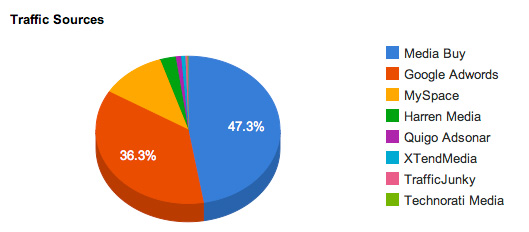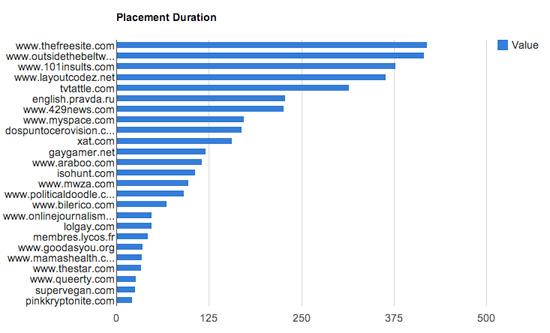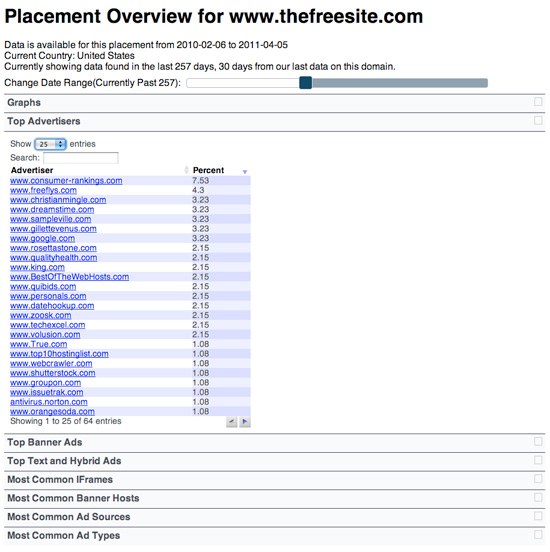Statistical Significance vs. Affiliate Gut Instinct
How much money are you willing to lose before striking profitability?
This seems to be the question that pops up on IM forums at least once per week, presumably because there is no set in stone answer.
Should I spend $50? $100? Two times the payout? Or should I just sling balls to the wind and let the campaign run for 24 hours?
Most of the advice given in response to these questions touches on the importance of statistical significance. Now, while in the real marketing world, budgets tend to permit the wisdom of waiting for statistical significance, I have to question the validity of the advice when you’re feeding it to a newbie affiliate with $100 in his bank account.
I had to look twice at a comment from one particular forum member stating that “it’s impossible to draw any reasonable conclusion from a campaign without 1000 clicks in the can“. Seriously, 1000 clicks? If I go 1000 clicks without a conversion, I have a fucking stroke and murder six kittens.
I admire the resilience, but I’m not going to lie, there have been many occasions where I’ve pulled the plug on campaigns after as little as 15 clicks. However, in these cases, it wasn’t a lack of respect for statistics that was pulling the trigger. It was a gut instinct.
Sometimes, no matter what the lab rats say, it’s possible to get a feel for an offer’s potential from a very limited set of data. There are several external factors that play in to this gut instinct.
The offer may have bombed in the past, or it may have been sitting on the network for months and yet never received a mention in the regular newsletters. Maybe – like myself – you’re simply not used to going 15 clicks without a conversion on a dating offer, and don’t like it.
You could also have many subconscious reservations about the campaign (“Hmm, well I’ve heard bad things about using Google Translate but I do want to get it live today…“), or simply the underlying feeling that the maths aren’t going to add up in your favour.
I will be the first to admit that adopting such a shotgun approach to managing campaigns has probably cost me money in the past. But it’s also saved me a lot of money that would have otherwise been splurged waiting for statistical significance to confirm what I already knew.
If you are new to affiliate marketing, yes, it’s true, you really do need to be serious about testing and tracking your campaigns. But you also have to develop a personal kind of AI – Affiliate Intelligence – which is an unfathomable knack for anticipating how a campaign will pan out before you’ve wasted the hundreds of dollars necessary to scientifically prove it so.
You also have to apply some good old fashioned common sense in how you’re actually spending your test budget.
While many of the biggest media buyers will be quite happy to spunk a few thousand dollars on display campaigns, I find the idea of testing and losing that much money on self-serve platforms like Plentyoffish or Facebook to be a major no-no.
I just don’t understand how it can happen.
Fair enough, if you invest $2000 and fail to break even, that’s an unfortunate but somewhat predictable plight. But if you invest $2000 and make practically zero in return, your problem isn’t a question of stumbling across the wrong campaign. Your problem is a monumental failure in finding the pause button. It’s inexcusable.
Nobody, and I repeat nobody, should be losing $2000 on traffic sources like Facebook or Plentyoffish. Investing $2000? Yes, perhaps, but losing it all? You’re doing it wrong. I can’t say what exactly, but you clearly took the advice of “not refreshing stats all day” too literally.
Recommended This Week
If you don’t have tracking software, I strongly recommend you pick up a copy of CPV Lab. We’ve been waiting on updates to the Lab for a while now, but it’s still a fine hunk of software that can only improve your chances of affiliate success. Just remember to heed your gut instincts too.
For those of you who advertise on Facebook, Premium Posts Volume 2 splurges over 70 pages of my tips, techniques and strategies for conquering Zuckerberg’s monster. Reviews so far have generally been that the Posts are better than sex, so please do check them out.
If you’re a new reader, please add me to your RSS. Also follow me on Twitter. Thanks for reading.





I can't remember the last time I was wrong on pausing or scaling an ad/campaign, even in less than 5…